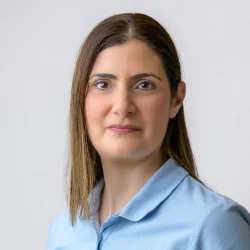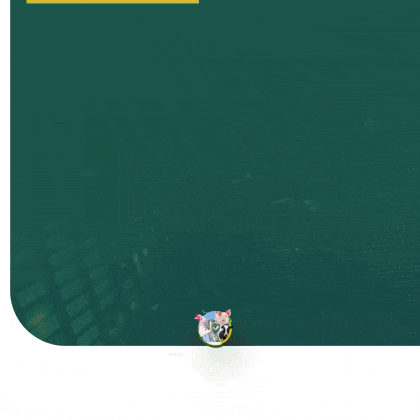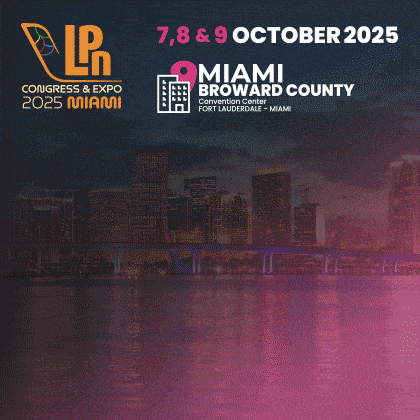Feeding for high milk quality in dairy cows under heat stress

Carolina Kyriacou, nutritional consultant from Vettaky LTD, Cyprus
MSc from the University of Wageningen, Netherlands
I am a dairy nutritionist in Cyprus, where the weather is among the hottest anywhere in Europe. Another fun fact about Cyprus is that in 2022 it was among the top 5 leading countries with the highest production of cheese production per capita (Figure 1). Milk quality matters to cheese production and dairy farm profitability. Therefore, an important role for me on dairy farms is to develop cost-effective feeding strategies for high milk quality even under high temperatures in the summer season. Let’s look at how adequate supplementation of trace elements in dairy rations can play an important role to alleviate the negative effects of heat stress on milk composition.
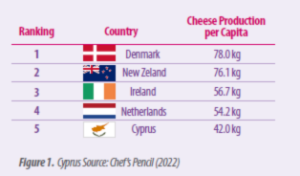
High yielding cows experience more heat-stress
The temperature humidity index (THI) (Figure 2) has been established as an indicator for heat stress risk. Collective data from research has shown that milk production in dairy cows can be affected when daily average THI exceeds 68. However, this also depends on the level of milk production in the dairy herd, as higher producing dairy cows are more susceptible to heat stress (Figure 3).
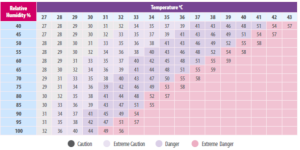
Figure 2. Temperature humidity index (THI)
Recent studies show that modern high producing dairy cows become heat-stressed at an average THI of 68. High producing dairy cows have a higher metabolic heat load due to processes such as lactogenesis and milk secretion. Consequently, as milk production and metabolic heat production rise genetically, heat stress will increasingly limit the expression of genetic potential. High producing dairy cows are also more prone to oxidative stress, which can further be exacerbated by heat stress with enhanced consequences for milk yield and quality.
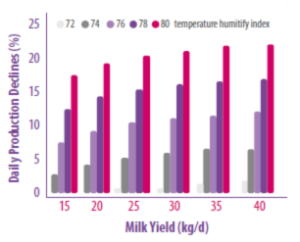
Figure 3. Decline in milk yield in response to THI based on milk production level. Source: Summer et al 2019
Calculating the THI can provide a good indication for the risk of heat stress in dairy cows at any given time. However, what this value does not consider are differences in the type of farming system the cows are kept in. This means the real heat exposure the dairy herd experiences may differ from the calculated THI. Farming systems may or may not include cooling systems or shading. Thus, the real heat exposure may be lower than reported by nearby weather stations.
Effect of heat stress on milk quality
Heat stress not only reduces the milk production but also affects the quality of milk by altering various components of milk. Most studies aiming to quantify the effect of heat stress conditions on cow performance report a decrease in protein and fat percentage, as well as milk yield.

Many milk payment systems rely on milk quality traits such as fat and protein content to determine the price per unit milk. These traits influence coagulation and technological properties of milk and consequently, cheese production.
It is therefore of great interest to farmers to produce large volumes of high-quality milk, particularly in countries in which the majority of supplied milk is directed to cheese production. In those countries with a high proportion of cheese production prolonged periods with elevated THI will not only have detrimental effects at the farm-level, but also to the dairy industry at large.
Research has shown a general decline in milk fat levels as well as reduction in milk protein between the winter and summer months. Furthermore an increase in somatic cell counts (SCS) was observed during the warm months.
More recent research from Italy reported that milk composition is more sensitive to milder heat-loads than milk yield. This means that even mild heat stress conditions could induce adverse changes in milk quality in dairy cows. The authors concluded that if farms would take into account the effect of heat stress on milk quality on top of that of milk yield estimated economic losses of dairy farms under heat stress would be far greater than previously thought.
Milk fat content
Milk fat content has been shown to decrease with heat stress in dairy cows. This can to some extent be explained by an increased risk of acidosis under those conditions. Factors that can contribute to rumen acidosis problems are a decreased dry matter intake with a lower proportion of forage and higher levels of fermentable carbohydrates, a slow down in rumination and a decrease in the amount of saliva reaching the gut.
Milk protein content
Milk protein is reduced by heat stress. Many studies attributed this reduction to a decline in feed intake. However, recent research revealed that decreased feed intake in response to heat stress only partially accounts for the reduction in both milk production and milk protein, suggesting additional mechanisms that disturb milk protein synthesis during heat stress. Results of these studies suggest that oxidative stress as a result of heat stress contributes to a reduction in milk protein content. The explanation for this is an increase in apoptosis (cell death) in mammary gland tissues that directly reduces the number of mammary epithelial cells. Furthermore elevated levels of free radicals also damage milk protein synthesis by regulating signaling pathways.
Somatic cell count
Dairy herds can experience a seasonal high in somatic cell counts (SCC) in milk during the summer months. SCC tends to rise with temperature and humidity levels during summer. On the one hand as a result of cows lying down more frequently in the heat, increasing the risk for environmental mastitis because of the enhanced exposure of the teat end to bacteria. On the other hand, heat stress increases the level of oxidative stress in cows, which again is known to reduce the resistance of cows to mastitis infections further exacerbating the risk for mastitis.
Heat stress increases oxidative stress
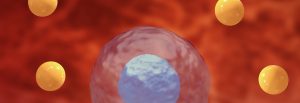 Heat stress stimulates the production of reactive oxygen species (ROS) in body cells. Oxidative stress occurs when there is an imbalance between ROS production and antioxidative defences in the cells. In dairy cows oxidative stress results in a negative impact on the immune system, increased mastitis frequency, higher somatic cell counts in milk, a reduction in milk protein content and reduced milk production.
Heat stress stimulates the production of reactive oxygen species (ROS) in body cells. Oxidative stress occurs when there is an imbalance between ROS production and antioxidative defences in the cells. In dairy cows oxidative stress results in a negative impact on the immune system, increased mastitis frequency, higher somatic cell counts in milk, a reduction in milk protein content and reduced milk production.
To prevent oxidative damage, animals are equipped with endogenous defence mechanisms including antioxidants, to counterbalance the effects of ROS, and these important compounds can be divided into enzymatic as well as nonenzymatic antioxidants.
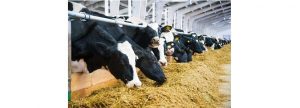 Consequently, the supplementation of diets with antioxidants can help to enhance the antioxidative capacity of the cow and alleviate the extent of oxidative stress. Dietary antioxidants include vitamins, trace-elements, polyphenols from plant extracts and carotenoids.
Consequently, the supplementation of diets with antioxidants can help to enhance the antioxidative capacity of the cow and alleviate the extent of oxidative stress. Dietary antioxidants include vitamins, trace-elements, polyphenols from plant extracts and carotenoids.
Trace mineral nutrition for high milk quality
There is a considerable amount of evidence that trace minerals such as selenium (Se), zinc (Zn), copper (Cu), and manganese (Mn) have antioxidative properties and can help minimize the negative effects of oxidative stress.

The organic form of Se (selenomethionine and yeast Se) performs better than inorganic Se (sodium selenite or selenate). Supplementation of 0.3 ppm/kg DM of organic selenium was effective in reducing oxidative stress in cattle. Selenium was also shown to increase milk protein synthesis.
Supplementation of rumen-protected zinc-methionine at 0.131% of diet dry matter resulted in better oxidative status in lactating high producing Holstein dairy cows under heat stress compared to control cows. It further helped to maintain milk production and composition during periods of heat stress (THI 75). Milk protein and fat levels were significantly higher in treatment cows vs. control. On top of that animals fed the rumen-protected zinc-methionine had significantly lower SCC during the experimental period than their counterparts in the control group.
Conclusions
There is no single approach to maintain high milk quality in dairy cows under heat stress conditions. It requires a holistic approach encompassing both management and nutritional strategies. However, supplementing the dairy ration with a balanced mix of key trace elements with antioxidative properties can be a successful part of these strategies to help counteract the negative effects of heat stress.
References available upon request.
You may also like to read: “Cold Diets: Mitigating Heat Stress in Dairy Cattle”
